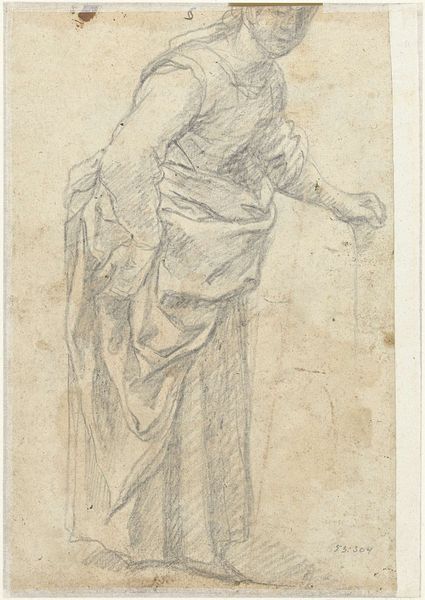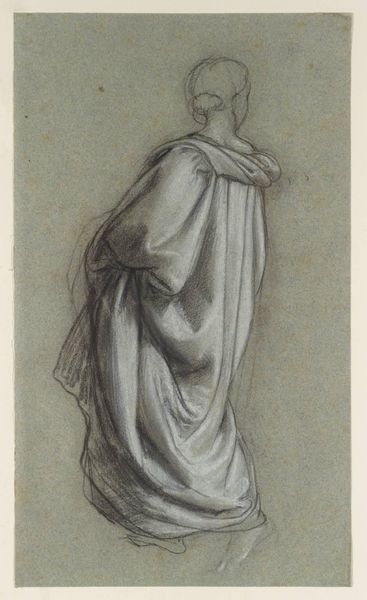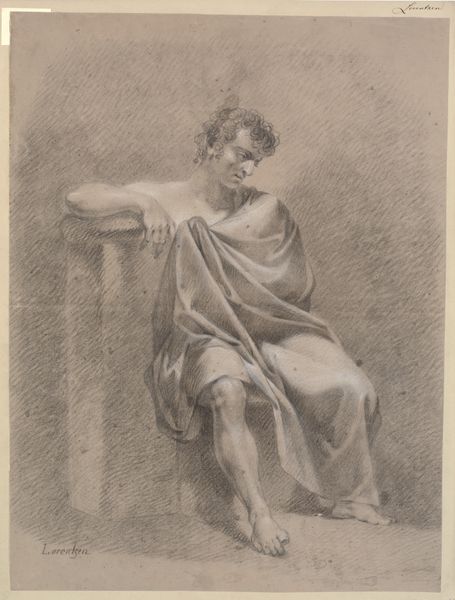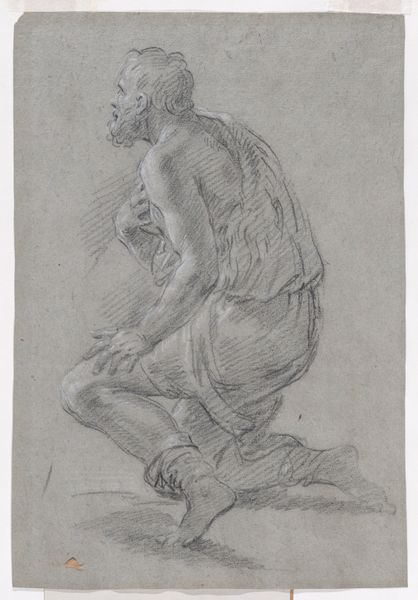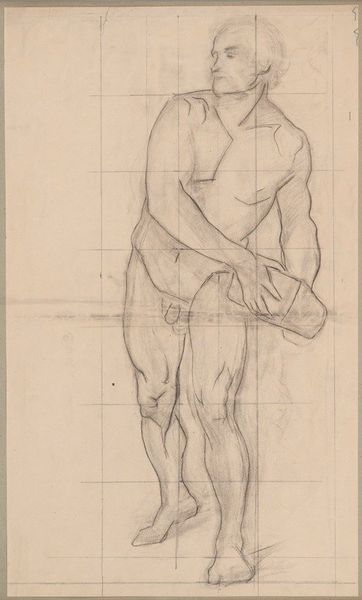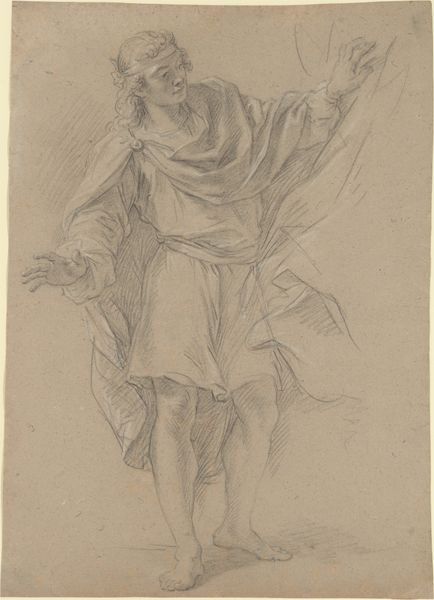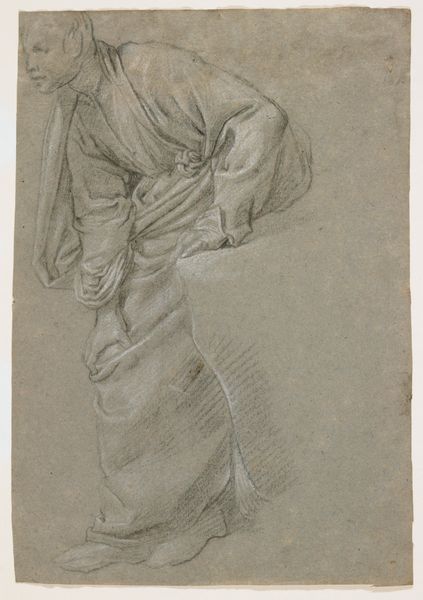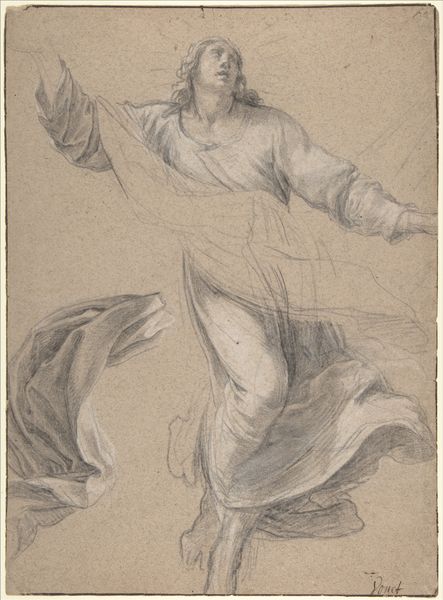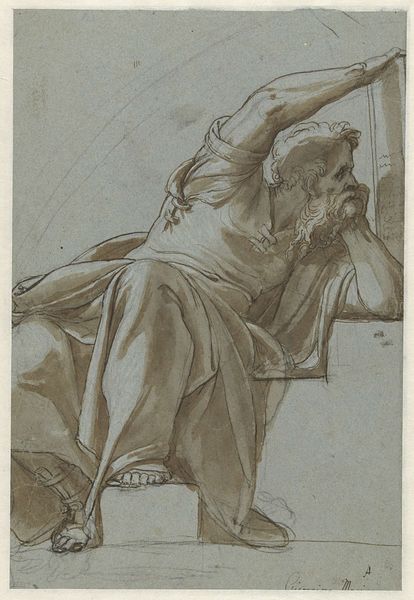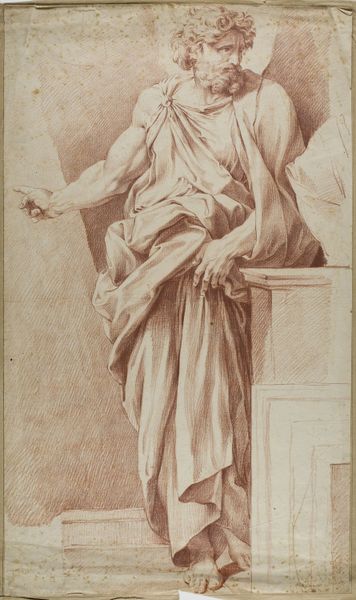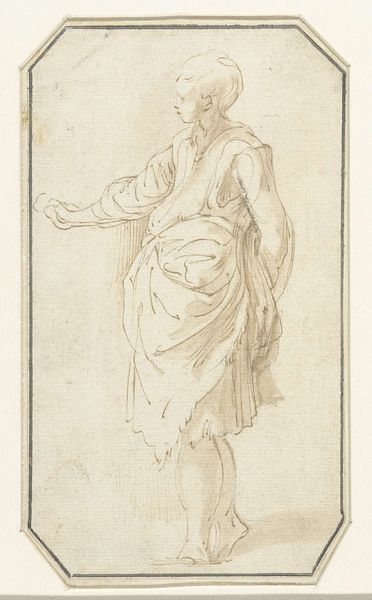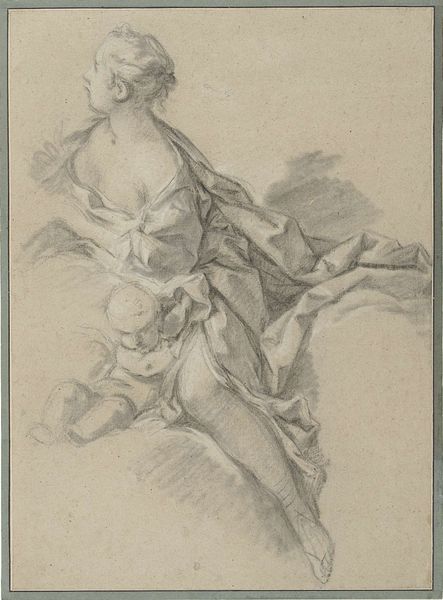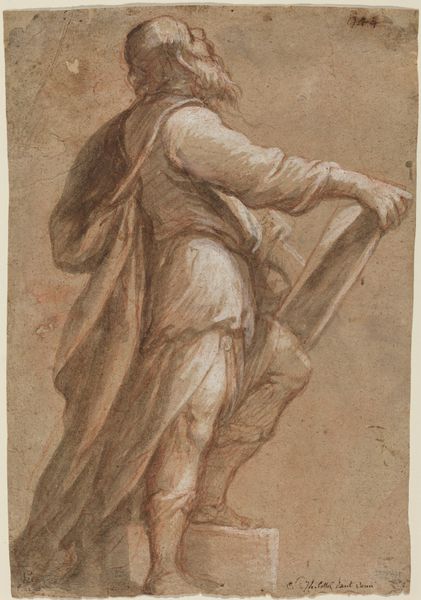
Studie van een man die aan het voeteind helpt bij het wegdragen van een lichaam 1765 - 1781
0:00
0:00
Dimensions: height 492 mm, width 376 mm
Copyright: Rijks Museum: Open Domain
Editor: This pencil and charcoal drawing, "Studie van een man die aan het voeteind helpt bij het wegdragen van een lichaam," or "Study of a man helping to carry a body by the feet" by Jean Grandjean, dates back to sometime between 1765 and 1781. The mood strikes me as solemn, maybe even a bit unsettling. What do you see in this piece? Curator: I see this drawing existing within the socio-political framework of the late 18th century, a period deeply concerned with both reason and heightened emotionalism. The Romantic movement, to which this work is attributed, wrestled with how institutions, particularly those of power, shaped the individual. Does this rendering suggest a common genre scene or hint at the grand narratives, perhaps religious, of the time? Editor: The way you frame it, I guess I had just assumed it was about grief, or maybe civic duty. It hadn't occurred to me to think about institutions. What is it about the technique that makes you consider grand narratives? Curator: Look closely at the anatomical rendering, the careful draping of fabric. Consider its classical allusions. Grandjean wasn’t simply capturing a mundane moment. He was likely thinking about how such images of labour or lament entered into a larger dialogue about the place of mankind – or the “citizen” – during the Age of Revolution. Does this potentially public role alter how we read the man's somber gaze, or the weight he appears to be carrying? Editor: It definitely changes the context! Knowing this was made during a period of revolution, and seeing the artist use these classical elements really reframes how this drawing makes me feel. I can almost imagine this figure on a revolutionary propaganda poster now. Curator: Precisely. The power of images resides not only in their aesthetic qualities but also in their social and political circulation. Considering how historical context shapes reception encourages richer engagement with artworks. Editor: I hadn't really considered that. I'll be sure to ask about that for other drawings too.
Comments
No comments
Be the first to comment and join the conversation on the ultimate creative platform.
